Aberdulais Heritage Trail
Rural Ramble: Aberdulais Heritage Trail
Tonna – Aberdulais Basin – Tinworks and Waterfall
Historic & Geographic Background
Aberdulais was one of many industrial hotspots in centuries past and a major transport interchange. The trail links Tonna via the Neath and Tennant Canals, the Tinworks and Waterfall* site.
The Neath Canal was surveyed as far back as 1791 by Thomas Dadford and opened between Glynneath and Briton Ferry in 1795 by engineer Thomas Sheasby. The 17-kilometre route cost £40000 and had 19 locks, this one being the Tyn-yr-Heol Lock. The house here was built towards the end of the 18th century as a lock-keeper’s residence and fulfilled that function for over 150 years. It is now fully restored and privately owned.
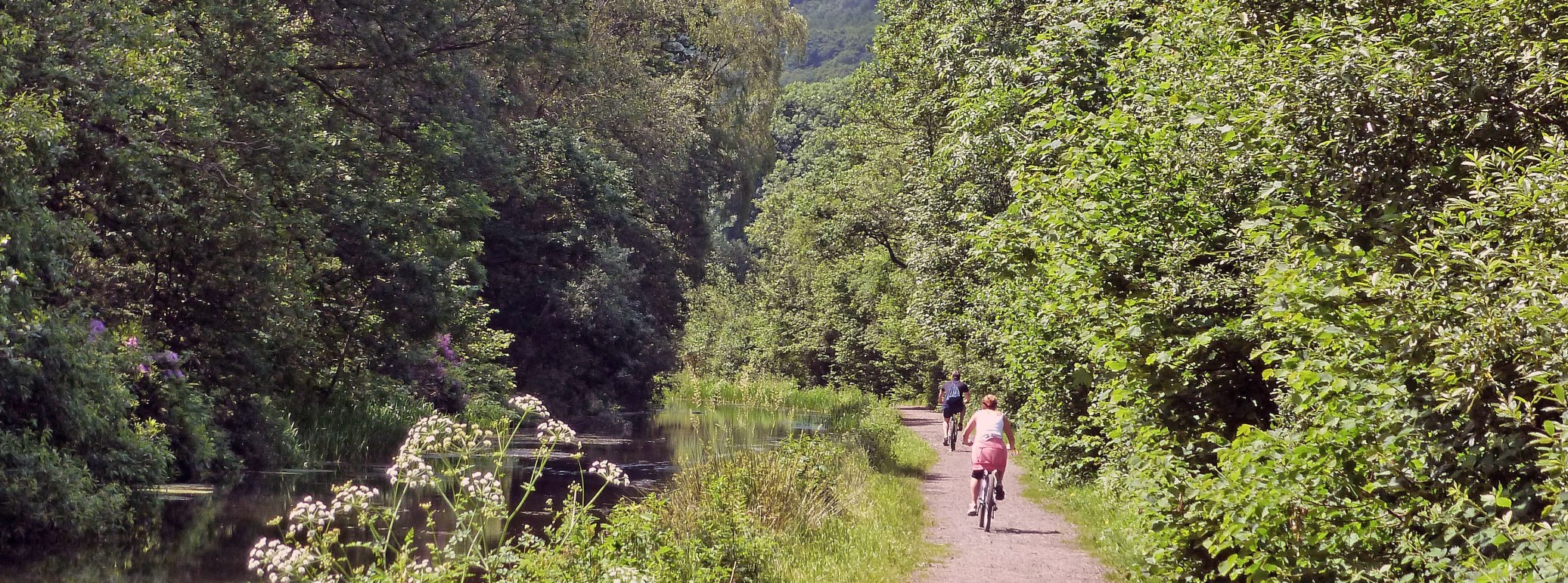
A typical scene along the towpath of the Neath Canal
The Walk: Route summary and Terrain
Canal towpath, tracks and pavements, level throughout.
- Start point: Tonna Lock (GR 770988)
- End point: Aberdulais Falls (GR 771993}
- Recommended Maps: 0.5. Explorer 166 / 0.5. Landranger 170
- Distance: 1.5 kilometres
- Estimated net time: 2 hours
- Grade: Easy to moderate
- Refreshments: Riverside café-bar, Aberdulais 01639 639111
- Toilets: Riverside café-bar
At Henfaes Road, Tonna turn at GR 770988 on to a minor cul-de-sac leading to the Neath Canal at Tyn-yr-Heol Lock (200 metres).
Cross the canal at the Tonna Lock with its attractive, recently restored, Lock House, and turn right on to the canal towpath.

Tonna Lock House on the Neath Canal
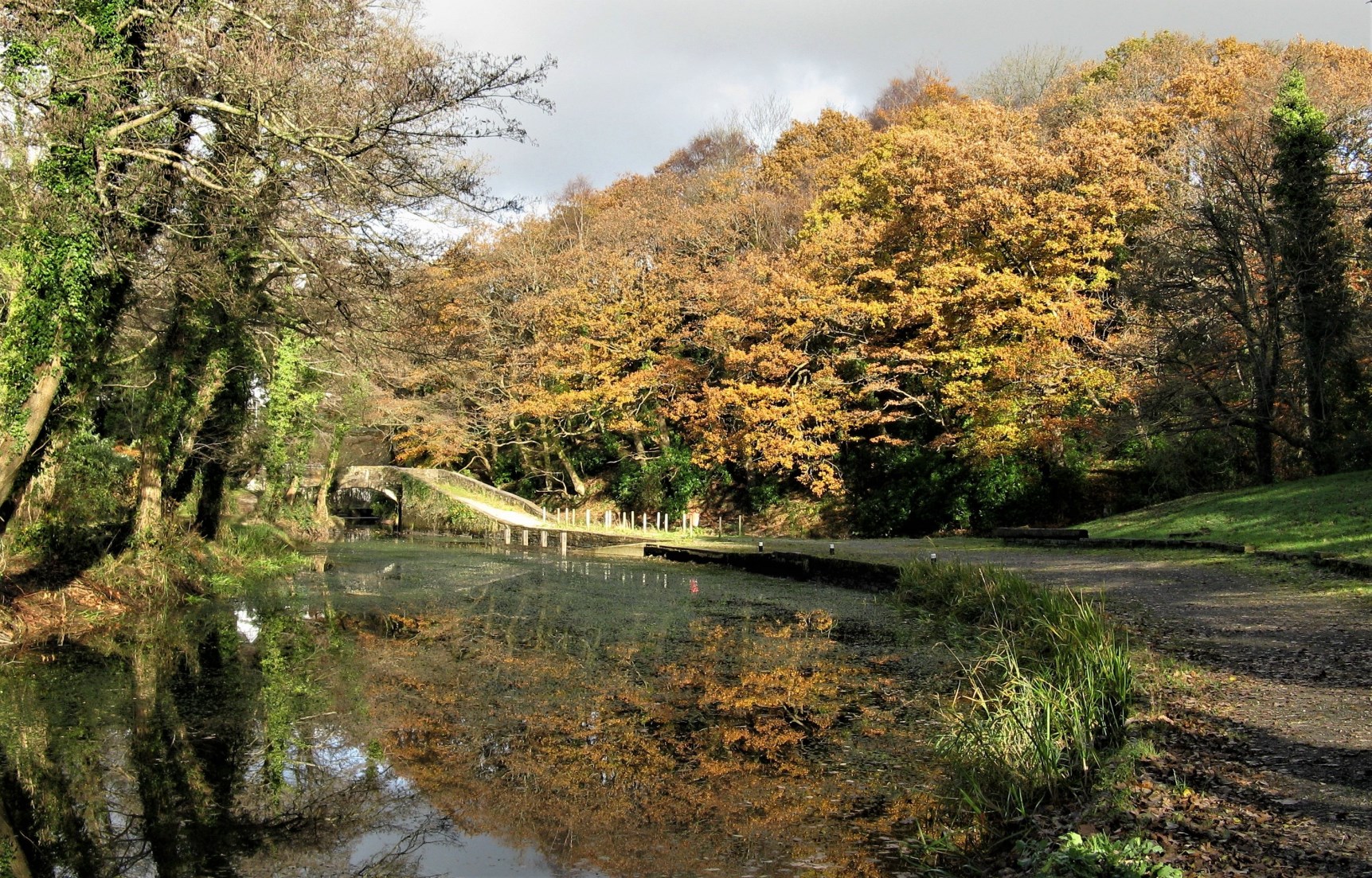
An autumn scene at Aberdulais Canal Basin. The Neath Canal is on the right
Follow the path for about one kilometre; at left is an unattractive gas distribution depot, at right the canal under a steep, well wooded, slope. At Aberdulais, cross the road then under the railway bridge to Aberdulais Canal Basin.
The Basin was the junction between the Neath (Glynneath-Briton Ferry) and the Tennant (Aberdulais-Port Tennant) Canals; also a loading and transfer point for freight traffic. Commercially, the Neath Canal was carrying 150,000 tonnes of coal by 1820 rising to a peak of 200,000 tonnes, mostly transferring to the Tennant Canal. The Tennant crosses the river Neath on an aqueduct (extant in poor condition) south of the basin, followed by a lock.
Take a short walk towards the river to see the aqueduct taking the canal over the river Neath and beyond, the bridge carrying the Vale of Neath Railway.
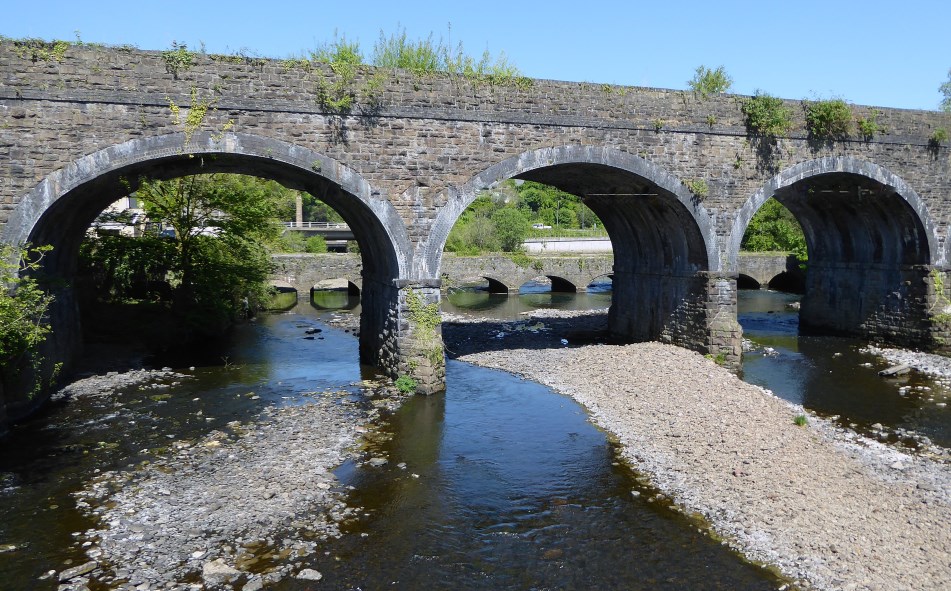
Railway Bridge carrying the Vale of Neath line.
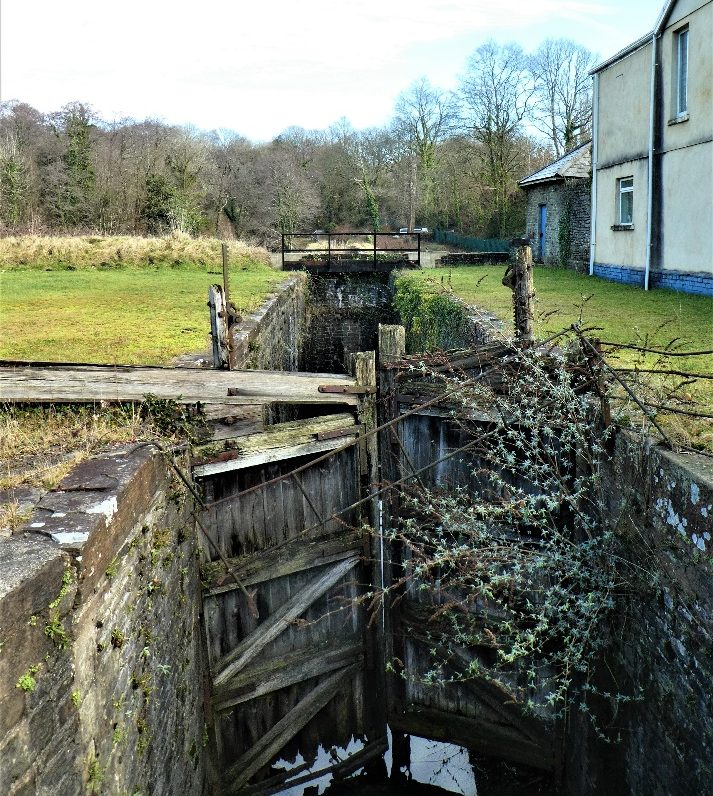
Aberdulais lock in dilapidated state with aqueduct in background.
The Vale of Neath Railway opened in 1851 between Aberdare (later also Merthyr) and Neath; its main purpose was carriage of coal and minerals from the Taff and Cynon valleys to Swansea Docks. It was acquired by the Great Western Railway in 1865 and developed as a strategic mid-valleys route to Pontypool. Passenger trains commenced in 1853 and ran for 111 years, ceasing in 1964; there was a station at Aberdulais. Freight traffic continued until recently though the line is now ‘mothballed’ due to lack of mining activity.
Leave the canal basin, drop down to the road, turn right and proceed over the river, turn right again past the former lock house, over the canal and under the A465 emerging on to the A4109. Turn right and opposite is the entrance to Aberdulais Tinworks and Waterfall.
Due to recent storm damage, this site is currently closed to the public, along with its café. Check for announcements about possible re-opening. As the famous Aberdulais Waterfall can only be accessed through the National Trust site, this too is unfortunately inaccessible.
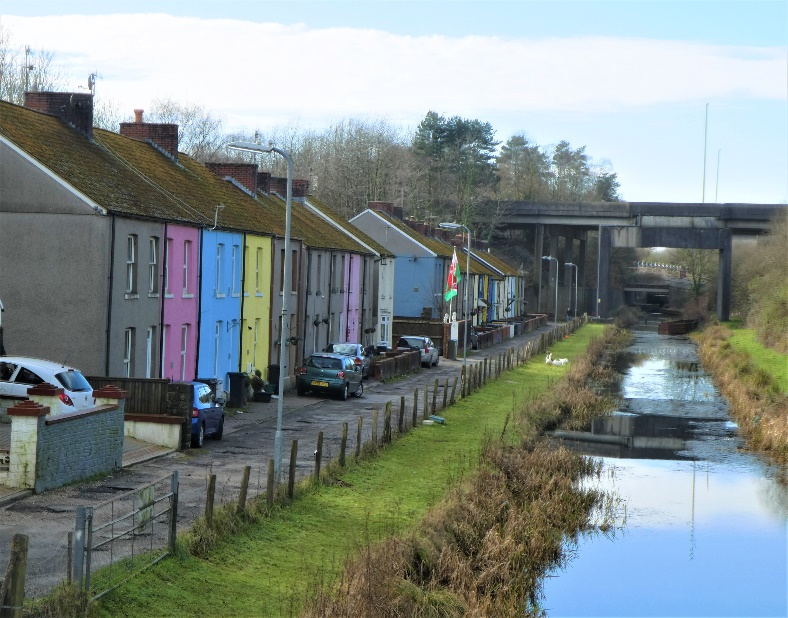
Historic canal houses alongside the Tennant Canal
Local Transport and Parking
- Train Station: Neath 2 kilometres
- Bus Stops: Tonna Lock Hill (200 metres), Aberdulais Falls (opposite NT 100 metres)
- Parking: Tonna roadside (free but limited) Aberdulais Falls (free but limited)
- Buses: The start is on the X7 route, every hour daytime weekdays, two per day Sundays. The end of the walk is on the X8 route which operates every hour daytime weekdays – www.traveline.cymru
